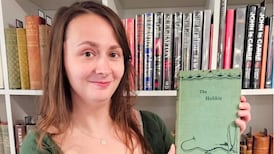To celebrate St Patrick’s Day, The Irish Times has assembled a list of books, fiction or creative nonfiction, one set in each Irish county. It would be fair to say that, no more than its population density, Ireland’s literary riches are not evenly distributed and a handful of counties had us racking our brains for a representative. A quick appeal on social media revealed, however, that while not everyone has a book in them, every county does have at least one.
Somehow it was more satisfying, where there was seemingly a dearth, to unearth from a fallow field a handsome horde of forgotten treasures.
Take Carlow, for example. All I could come up with off the top of my head was A Provincial Death, the second novel by Dr Eoghan Smith, who lectures at IT Carlow. Given its maritime setting and coastal inspiration, however, it didn’t seem the perfect fit for a landlocked county. I’m embarrassed to admit I’d forgotten that Dinner Party: A Tragedy, the debut novel by our regular reviewer Sarah Gilmartin, which I read only last year, is partly set in the county. In my defence, she’s from Co Limerick. Following the rebellious Fiach McHugh O’Byrne up to Carlow were the novelists Michael Farrell, whose classic Thy Tears Might Cease is set in Glenkilly, a town based on Carlow, from the Easter Rising to the War of Independence; and William Nolan’s They First Arose, set during the 1798 Rebellion. Now spoiled for choice, I ended up selecting The Deadwood Encore by Kathleen Murray, a debut comic novel unambiguously set in a small Carlow town and out next month from HarperCollins.
Offaly was also initially a bit of a struggle. I was fascinated to discover that The Third Policeman by Flann O’Brien was in part inspired by the author’s formative years in Cappincur, near Tullamore. His biographer, Anthony Cronin, suggested that the area’s very flatness and lack of relief gave the novel the “curiously threatening and disturbing quality” it needed. The eponymous hero of Mary O’Grady by Mary Lavin leaves behind the Offaly countryside and the family she cares for to be with her husband in Dublin but looks forward to the day when she will return to Tullamore with her own sons and daughters. The Geometer Lobachevsky by Adrian Duncan, due out from Lilliput next month, begins with a Soviet expert assisting Bord na Móna with a survey of an Offaly bog. The Flight of the Wren by Orla McAlinden, which explores the impact of the Irish famine of 1845-1849 on the women of Ireland, is set in Offaly as well as Kildare and Tasmania. All solid options. But then I was reminded of Minor Monuments by Ian Maleney, a brilliant collection of essays, most of which are rooted in his native Offaly around his small family farm on the edge of a bog, a few miles from the river Shannon.
What Willow Says by Lynn Buckle, recent winner of the Barbellion Prize is partly set in Laois, drawing on local legends. But having visited and been captivated by Emo Court, my imagination was captured by the revelation that Benedict Kiely had written a novel set there, based on his experiences as a novice when it was a Jesuit seminary.
But without further ado, let us head North to start our literary tour of Ireland, in the fictional village of Ballylack, Co Antrim, the setting for the latest novel from the Ballymena-born author Jan Carson, and proceed in alphabetical order to Co Wicklow.

Antrim: The Raptures by Jan Carson (2022)
This is a novel about faith – and its limitations. It’s also a story of love. Hannah – and indeed all the children – are loved with fierce tenderness; their parents’ agony is conveyed with visceral effect. But painful as it sometimes was, I could not stop reading. There’s enough playfulness, wit and empathy to sweeten the pill.
It's almost impossible to categorise this novel. Is it a coming-of-age story? An exploration of faith – its comforts, its abuse, its limitations? A depiction of day-to-day life in a war zone? A dramatisation of living with a plague (something we've all had to become used to)? It's every one of these and more. Original and vivid, The Raptures is its own beautiful, unique thing. Review by Marian Keyes
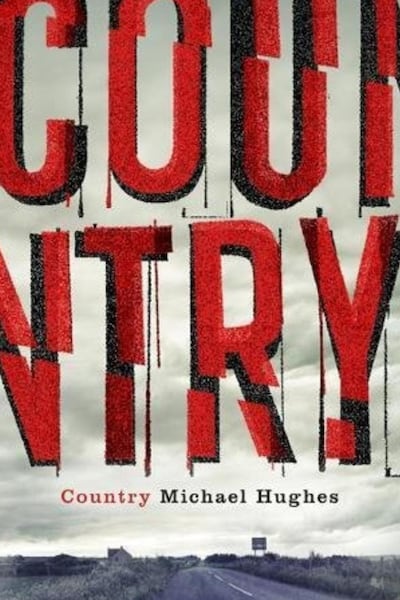
Armagh: Country by Michael Hughes (2018)
With Homer’s Illiad as the baseplate for this 1990s novel, Hughes reaches deep into the country and grasps something furious, elemental and dark.
The Illiad stripped of its lyricism carries an unfading relevance. Hughes' perception is on the money. This is a hard, rigorous and necessary book which grinds out its beauty as the song cycles of empire and resistance fall silent, choked in their own blood. Review by Eoin McNamee
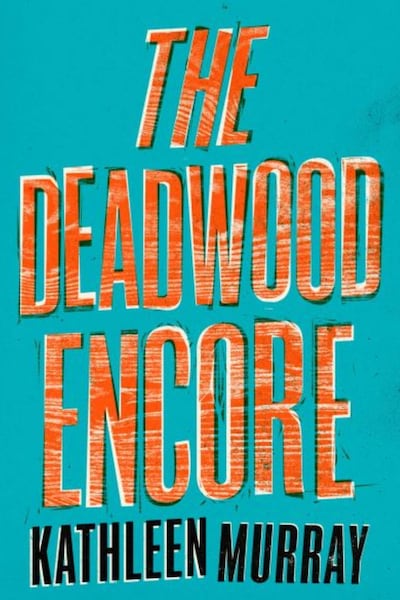
Carlow: The Deadwood Encore by Kathleen Murray (2022)
Frank Walsh is the seventh son of a seventh son, so by now should have inherited his late father’s legendary healing power, but instead he’s stuck on ringworm and warts. Frank idles about his small town in Carlow, labouring in the local sawmill, healing the occasional ailment, most evenings spent at home with his eccentric mother, who is convinced she can commune with the dead. He already feels adrift when his twin, Bernie, confides something to Frank that casts a shadow over how he perceives his place in the world… and then he discovers that his father had been keeping secrets of his own. And so Frank turns to an unlikely source for guidance, which propels him on a quest of self-discovery, picking up clues about his father’s past along the way, hoping they will shed light on his rightful place in the family.
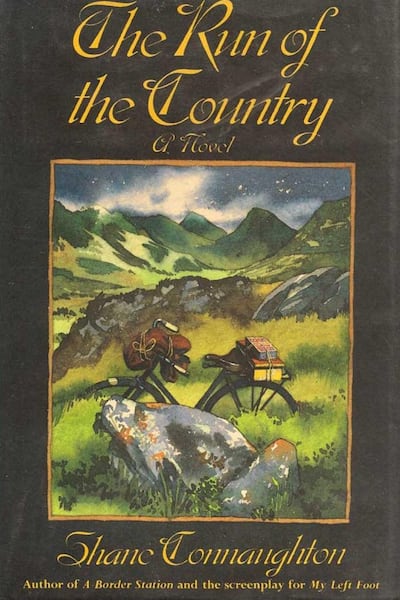
Cavan: The Run of the Country by Shane Connaughton (1991)
In both A Border Station (1989) and The Run of the Country, Connaughton skilfully mined his Cavan upbringing for stories that revolved around generational conflict, sectarian bigotry and doomed emotional attachment. Both works are very much of their time and place: pre-peace process fictions preoccupied with different kinds of border-crossing, though neither offers much hope of reconciliation across the political divide. As the domineering father in The Run of the Country bleakly proclaims: "As long as that Border's there fools' blood is all you'll get in this country. If they wanted peace they wouldn't put a border up, would they?" Review by Liam Harte
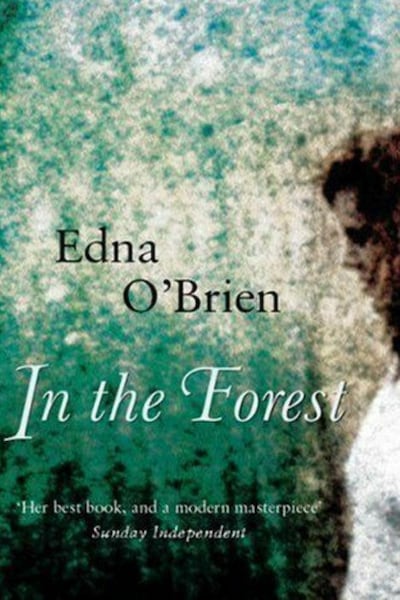
Clare: In The Forest by Edna O’Brien (2002)
Set in familiar O'Brien territory in the rural west of Ireland, In the Forest is based on the real-life tragedy of artist Imelda Riney and her young son, who were abducted and murdered by a neighbour Brendan O'Donnell in Whitegate, Co Clare in 1994. While serving a life sentence in Dundrum Mental Hospital for their murders and that of a local priest, O'Donnell was found dead in 1997, inspiring O'Brien to a fictional retelling of events. Her novel gets inside the head of its troubled protagonist Mich O'Kane, charting his course from childhood, to his time spent in a juvenile institution, to his development into a disturbed young man whose internal voices urge him to be "a desperado, to earn for himself the name and state of outlaw." Read more
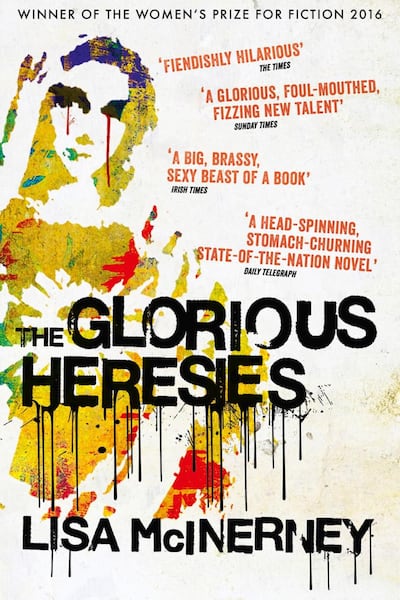
Cork city: The Glorious Heresies by Lisa McInerney (2015)
Set in post-bailout Cork, the book presents the story of how a bizarre murder unleashes consequences for a handful of people whose relationship with authority is complex, to put it mildly. The characters are colourful and the colours are murky. We meet Ryan, a teenage drug-pusher, his drunken dad Tony ("his father was many things, but none of them responsible"), prostitute Georgie, and Maureen, the accidental murderer who despatches her victim by bashing him on the head with a religious relic. This strong, confident debut is also something very much more: an accomplished, seriously enjoyable and high-octane morality tale, full of empathy, feeling and soul. Review by Joseph O'Connor

Cork: The Art of Falling by Danielle McLaughlin (2021)
Choosing just one book for Cork was too difficult, so we've included two. (So you can stop wondering why there's 33 books in this list.) Such was the brilliance of Danielle McLaughlin's 2015 debut short story collection, Dinosaurs on Other Planets, that expectation levels for her first novel were extremely high. Its long gestation – the novel's conception dates back to a writing workshop with Nuala O'Connor in 2012 – must have added to the anxiety. We need not have feared. The Art of Falling is exceptional, and critics are already falling over themselves to praise it. The text has such depth, it could have been sent to a 3D printer. The novel is firmly anchored in the author's native county. Her protagonist Nessa's description of the light by the sea in west Cork as not soft but "glorious, razor-sharp and unsparing" is a perfect description of McLaughlin's own writing. Interview by Martin Doyle
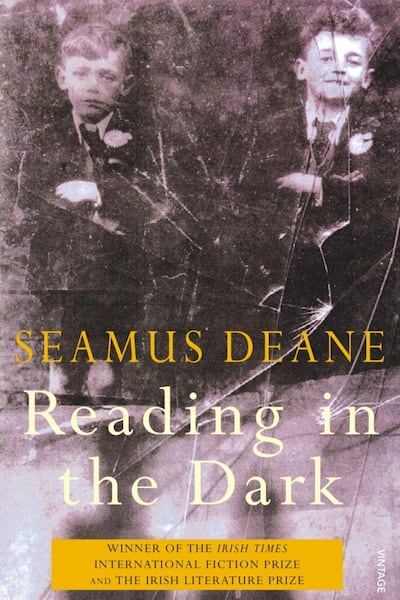
Derry: Reading in the Dark by Seamus Deane (1996)
Few debut Irish novels have been more widely celebrated, and with good reason. Yet Deane's powerful, episodic excursion into a Derry childhood dogged by external political tensions and a dark, unspoken family history, is at heart a painful ghost story written from the gut. The book is terse and elegiac, with a lyrical style. Deane's narrator is reckless and yet cautious, even cunning at times, in his need to unravel the past which he approaches with the edgy daring of one peeling a plaster off a wound. The tone of loving intensity in which he observes his beloved father and, in particular, his silent, suffering mother is that of a witness neutralised by grief. This is an uneven book – lighter moments seem included merely to deflect the weight of memory. But as testimony, as reportage, as memorial and as lament, it is unforgettable. Review by Eileen Battersby
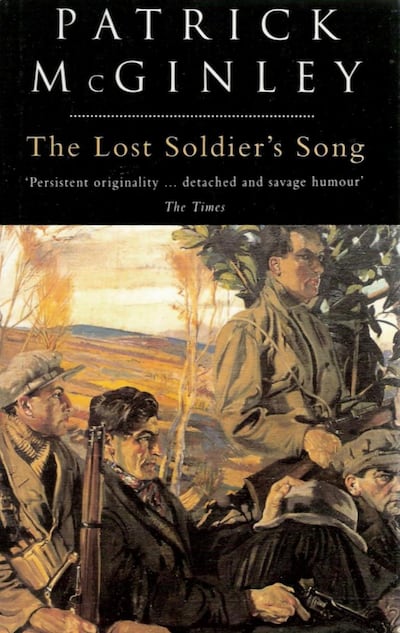
Donegal: The Lost Soldier’s Song by Patrick McGinley (1994)
Patrick McGinley’s gripping, moving novel will get some people’s goat for its universal anti-war message in the tradition of Remarque and Barbusse has the very specific setting of the War of Independence, following the fortunes of an IRA flying column whose members have been brutalised by war. The writer’s view is summed up by Ganly, a disillusioned republican: “We’re fighting high-handed imperialism with high-minded barbarism”. The Donegal-born author’s eighth novel marked a change of direction after a string of outlandish, black comic thrillers such as Bogmail and Goosefoot, filmed as Murder in Eden and The Fantasist.

Down: Orchid Blue by Eoin McNamee (2010)
Eoin McNamee might have been predestined to write a novel about the murder of 19-year-old Pearl Gamble after a dance at an Orange hall in Newry, Co Down in 1961, for which Robert McGladdery became the last man to be hanged in the North after a trial controversially presided over by Judge Lance Curran, whose own 19-year-old daughter Patricia had been murdered only nine years previously.
Patricia Curran’s murder, and the wrongful conviction of Iain Hay Gordon for the crime, was the subject of McNamee’s brilliant and darkly compelling 2001 novel, the Booker-longlisted Blue Tango, which dwelt at length on the suspicious behaviour of Lance Curran on the night of the murder, so when he discovered that Curran was the hanging judge in a similar case, the idea for another novel slowly began to germinate.
If McNamee's subject matter is dark and ugly – violent death, cover-ups, conspiracies and corruption – his writing style is in stark contrast lyrical and heightened, full of finely-wrought passages and memorable turns of phrase – for example, McGladdery and his friend finding a hiding place to smoke becomes "an apprenticeship in the clandestine" – punctuated too by staccato sentences, a masterpiece of small-town gothic and the "dark grammar" of murder. Read more
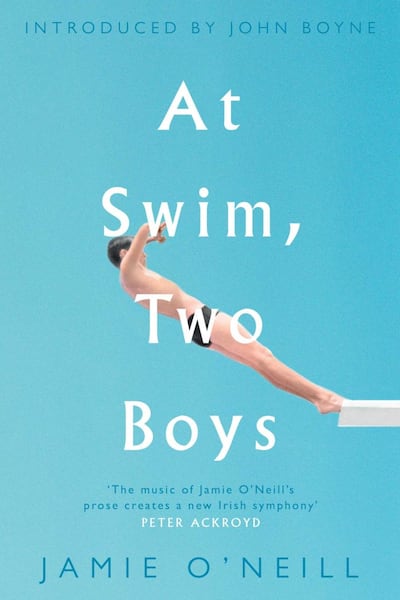
Dublin: At Swim, Two Boys by Jamie O’Neill (2001)
There is no shortage of Dublin fiction, from Ulysses by Joyce to Nora by Nuala O'Connor, this year's One Dublin One Book choice. In fact, their back catalogue is a capital source of reading suggestions. But let us do our own thing. This book is an absolute banger. History is not made in a moment, but in a series of moments which build and intensify until they reach critical mass. Then, and only then, comes the explosion. Such is the concept which underpins Jamie O'Neill's lengthy, leisurely study of the year before 1916, and its impact on the lives of two boys: Jim, naïve younger son of the pompous shopkeeper Mr Mack; and Doyler, the tough offspring of Mr Mack's old army buddy. At the Forty Foot, the boys make a pact: that Doyler will teach Jim to swim and that in a year's time they will swim out to claim the Muglins rock for Ireland, and for themselves. A year, of course, can be a very long time in emotions as well as in politics, and O'Neill charts every heartbeat of this one in what is a jaw-droppingly ambitious novel with a retrospective coolness which betrays a very 21st-century sensibility. No wonder At Swim, Two Boys took 10 years to write. Its rattling pace, however, ensures that it takes no time at all to read.
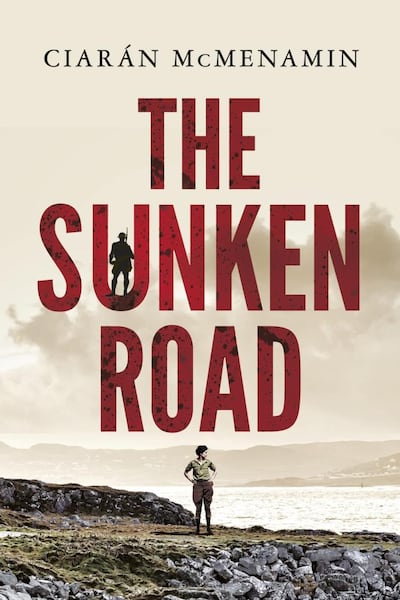
Fermanagh: The Sunken Road by Ciaran McMenamin (2021)
Ciarán McMenamin's excellent, gripping second novel, The Sunken Road, is a frequently brutal war story, a fictional recreation of the last important battle in the Irish struggle for independence, a powerful reflection on complex Irish loyalties, divisions and identities, a romantic drama, and a page-turning thriller. The action switches chapter by chapter between earlier scenes of Francie, Archie and their comrades in the trenches, fields and towns of France in 1915-1916, and Francie and Annie's later escape from Crozier over the countryside before they enter a fierce gunfight between Irish and British forces on the disputed Donegal-Fermanagh border. Read more
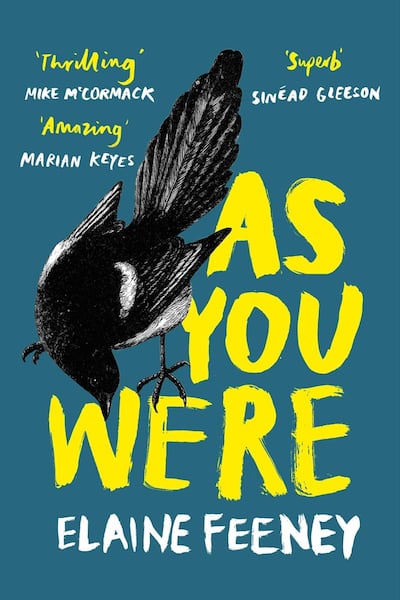
Galway: As You Were by Elaine Feeney (2020)
Sinéad Hynes, the protagonist of Elaine Feeney's powerful debut novel, is a Galway woman in her 40s recently diagnosed with terminal cancer. Holed up in bed on a public hospital ward, she needs assistance to eat, to shower, to go to the toilet. Still processing her diagnosis, Sinéad refuses to tell her husband Alex the truth, claiming instead some nebulous illness that means he can't bring her young sons to visit. As You Were offers meditations on life and death from the coalface. Fierce and insistent, its stories continue to burn brightly long after reading. Review
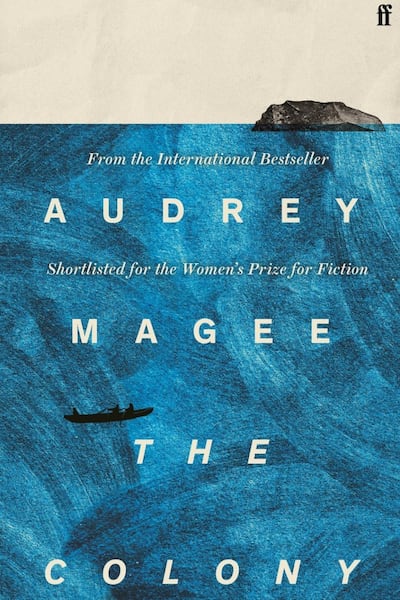
Kerry: The Colony by Audrey Magee (2022)
While the Irish-speaking island that is the setting for Magee’s second novel is not named, the author name-checked Blasket Islander Peig Sayers as a writer she admired in an interview about this widely-acclaimed novel. It is the story of two outsiders, a French linguist and an English painter, who seek to capture this remote outpost’s essence.
The Colony is full of learning, from the Penal Laws, which contributed hugely to the decline of the Irish language, to the swift and brutal acceleration of violence by both sides in the Troubles. Magee skilfully layers these themes throughout the book. Both Lloyd and JP are high-minded about their respective endeavours on the island, their pursuit of authenticity, a word that is repeatedly used to excuse the various degrees of pillaging necessary to achieve it. Review
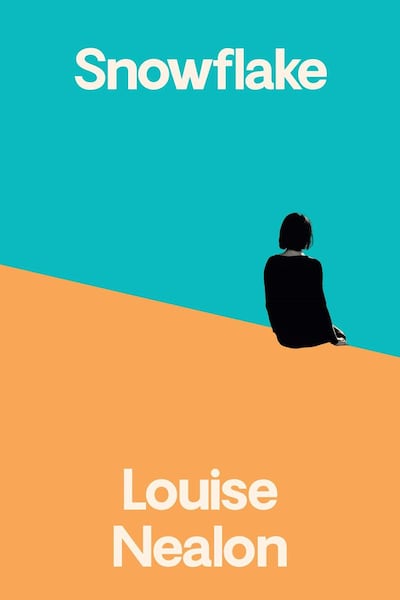
Snowflake is a novel by a young woman who studied English at Trinity about a young woman studying English at Trinity. The narrator’s mental health is fragile, she doesn’t keep up with her classes and she’s given to sexual misadventures that make her feel worse. A reader might think that we have seen this before, and also that the marketing at least is directed towards a demographic into which many readers of The Irish Times probably do not fall.
As the kids would say, yes but no. Snowflake is well-written: Louise Nealon has the knack of neat similes (a screen saver “floats definitions of words across the monitor, like fish on a modelling catwalk”), and though the narrator Debbie is indeed an 18-year-old who can’t cope/won’t cope with the step from school to undergraduate life, she’s also curious, knowledgeable and darkly funny.
Snowflake is much more than the tribute act suggested by its hype. It a sweet, clever coming-of-age novel that finds charity and depth for its older characters as well as the young, and I look forward to seeing what Louise Nealon does next. Review
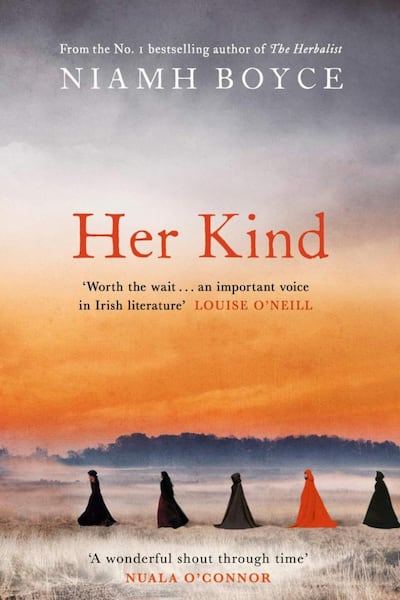
Kilkenny: Her Kind by Niamh Boyce (2019)
In 1324, a woman in Kilkenny became the first person in Ireland to be burned at the stake for witchcraft and heresy. The Kilkenny witch trial stands out as a precursor of the witch craze that later swept early modern Europe, in which tens of thousands of people, mostly women, were sentenced to death on the pyre for the supposed crime of sorcery. There are a myriad of stories behind each of those horrible deaths; Niamh Boyce's gripping new novel is a reimagining of just one of them. Review
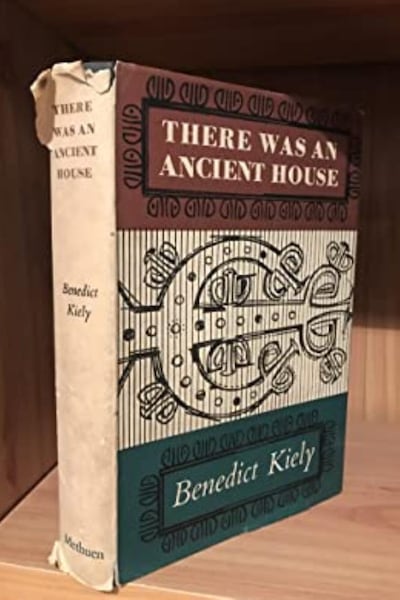
Laois: There was an Ancient House by Benedict Kiely (1955)
Kiely, the author, critic and literary editor from Dromore, Co Tyrone, was a novice at the Jesuit seminary of St Mary’s, Emo, know today as Emo Court, which inspired this novel. In the ancient house of a Irish religious order, 30 novices attempt to conform to the patterns laid down by religious authority: Frawley, boisterous and unconventional; Barragry, the cynical journalist who has left behind a full life and a good woman; MacKenna, sensitive and literary, guarding a frightening secret which he dreads revealing to the fathers.
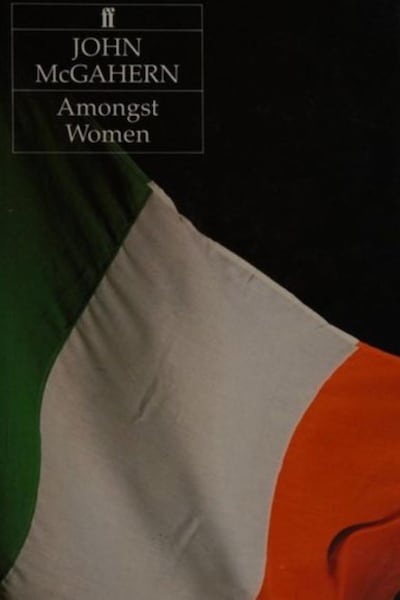
Leitrim: Amongst Women by John McGahern (1990)
McGahern’s masterpiece portrait of a patriarch as a disillusioned and domesticated revolutionary inspired this praise from Donal Ryan: “Amongst Women almost finished me as an aspiring writer. How could a book be this good? Existence is inchoate and incoherent and senseless. How could this representation of existence feel so resolved, so correct, so like it hadn’t been written at all but alchemised from flesh to paper and ink. How could this Moran character have seared his mark so indelibly on my consciousness? Why could I still see Rose months later in my mind’s eye and hear her gentle voice? Michael “out in the front garden among his flowerbeds”, Luke, and the terrible chasm that couldn’t be bridged. And worse: I had thought of my idiotic young self as “a fella who was well able to do a nice description of landscape” – until I came across this subtle, perfect, achingly beautiful description of the morning of a day when hay could be saved: “a white mist obscured the dark green shapes of the beech trees along the head of the meadows and their sandals made green splashes through the cobwebbed pastures. A white gossamer hung over the plum and apple trees in the orchard. A hot dry day was certain. Not even by evening would there be a threat of rain. No work could be done until the sun burned the mists away and dried the swards.”

Limerick: Without My Cloak by Kate O’Brien (1931)
The author set five of her nine novels in her native Limerick, which she fictionalised as Mellick. She was one of the first to comprehensively chronicle the Irish Catholic middle-class experience. This, her prize-winning debut, witnesses its very birth with the arrival of a horse thief heralding the genesis of a merchant dynasty. A saga spanning three generations, it covers matches made and lost for the sake of respectability, divided loyalties, and freedom suppressed by both religious and familial duty.

Longford: Solace by Belinda McKeon (2011)
Longford author Belinda McKeon’s acclaimed debut concentrates on Mark Casey’s estranged and emotionally charged relationship with his father, Tom, who runs a small farm in Dorvaragh, Co Longford. Mark is a doctoral student at Trinity College Dublin whose dissertation on Maria Edgeworth has stalled. At the beginning of the novel he is torn between rival demands: the need to deliver a chapter of his thesis on time in order to secure his scholarship funding and an equally urgent imperative to return home to help with the annual hay-making.
Solace tracks the sharp divides between two radically different Irish social realities: an ageing and conservative rural community in Co Longford with its gossip-driven and pointedly secular modes of surveillance and control acts as a counterfoil to the urban milieu of the young adults in the novel who are at ease with the hedonism, laxity, sexual promiscuity and tolerant diversity of contemporary Dublin. Review
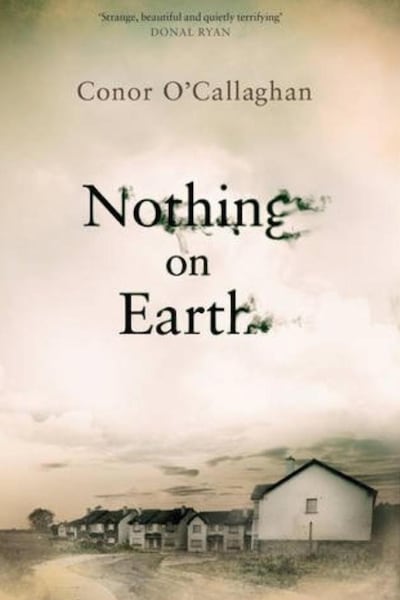
Conor O’Callaghan immediately stamps his authority on this extraordinary, low-key and pitch perfect novel and maintains effortless control in what is one of the most impressive pieces of Irish fiction writing since Neil Jordan’s The Dream of a Beast in 1983.
Many writers of virtuoso prose have nothing to say; equally novels based on important events are often written in dull, laboured prose. Conor O'Callaghan has without pretence of affection or straining for effect, told an original story, and brilliantly, in plain prose which does shimmer in shade and nuance. The bleak ghost estate in all its unfinished bleakness, to the last pile of rubble and lone dusty weed, is as clear as the relentless daylight illuminating the mess. Little is spelt out, nothing is given away. Mystery drives the narrative. There is also the calm menace reminiscent of William Trevor. Review
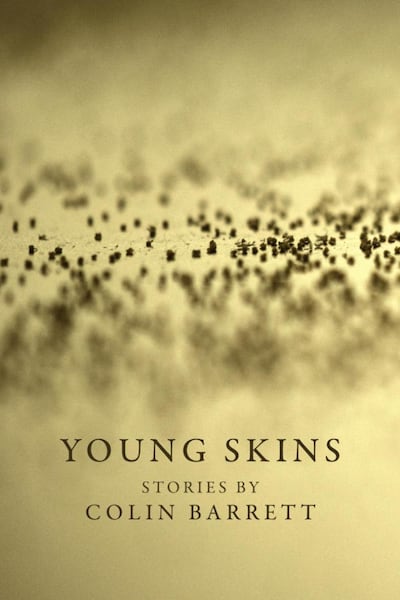
Mayo: Young Skins by Colin Barrett (2013)
It isn't necessarily the job of fiction writers to explain our social landscape, but sometimes the best of them do. Colin Barrett's short, brutal collection of stories presents clearly and without sentimentality a picture of the young Irish small-town male, in his current crisis of hopelessness and alienation. It is set in a fictional west of Ireland town called Glanbeigh (Barrett grew up in Ballina). The young men in it, mostly under 30, enact scenes of stunted opportunity, and proceed through life in a state of low-level anxiety. There is no love, no tenderness. A bit of lust, perhaps, a bit of looking at "girls' behinds", always accompanied by a yearning inarticulacy. The centrepiece of the collection is a 73-page novella, Calm With Horses. In its high-octane violence and profound nihilism, it reads like a Martin McDonagh screenplay, although it is substantially more self-aware than that writer. Review
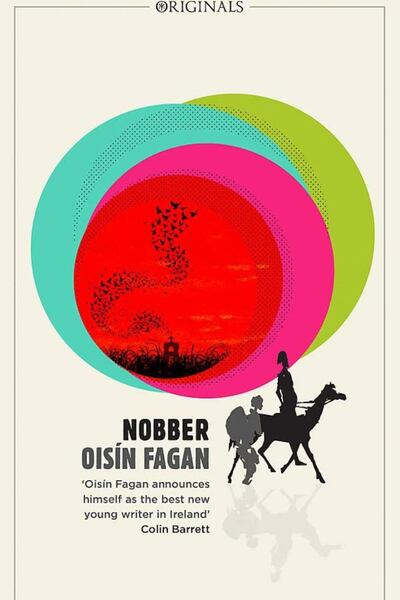
Meath: Nobber by Oisin Fagan (2019)
Oisín Fagan's debut novel is set in 14th-century Ireland and tells of four intrepid chancers – a nobleman called Osprey de Flunkl and his underlings William, Harold and Saint John – who scope out plague-ravaged towns in the hope of acquiring properties on the cheap. They alight on a small town called Nobber; it is "overflowing with death", its shut-up houses resembling "closed oysters". As a work of narrative fiction resembling a cross between a medieval picaresque, a children's adventure story and one of the "historical" Carry On films, Nobber occupies the intersection of a Venn diagram nobody even knew existed. Fagan is a skilled storyteller with a rich command of language and rare comedic flair. Review
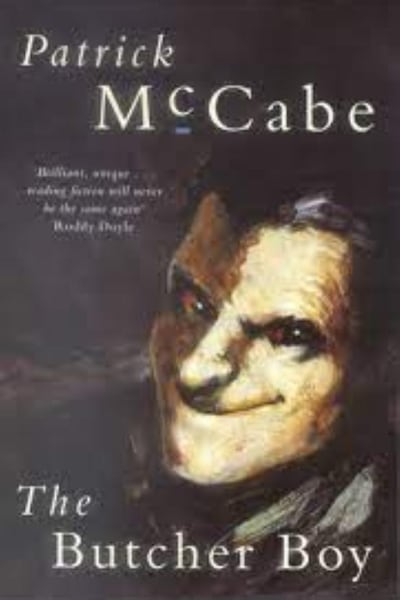
Monaghan: The Butcher Boy by Patrick McCabe (1992)
It’s the flood of words, spewing across the page, like pig guts from the slaughter house, that drags you into the world of Francie Brady. Reading the Beano and Dandy, guzzling “Flash Bars”, playing cowboys and injuns with his friend, Joe. Killing Mrs Nugent.
Pathetic, terrifying Francie Brady. It's hard to believe that when The Butcher Boy was published in 1992 we seemed to know little about the horrors of the industrial schools, the Magdalene laundries, the widespread abuse of children by Church and State. Like kids watching a scary movie we had put our hands over our eyes and concentrated on the ice cream. But the story of Francie is the story of those who suffered. McCabe the alchemist, turning the base metal of Francie's misery into the shimmering gold of art. Review
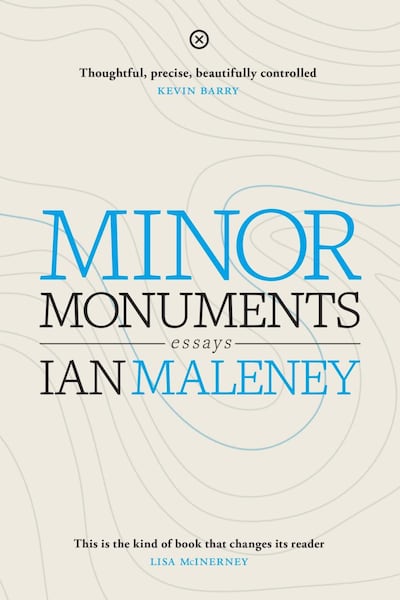
Offaly: Minor Monuments by Ian Maleney (2019)
The writer of this loosely connected debut collection of essays, around the themes of home, memory and belonging, has been plying his trade as a freelance arts correspondent based in Dublin for several years, and is indeed a sometimes contributor to this newspaper. However, his origins lie in the much maligned "fly over country" of the midlands – Co Offaly to be precise – and it is the tug and pull of metropolitan cultural life against the old ways of the small family farm on the edge of a bog which informs the mood of these meditations. Review

Roscommon: The Wild Laughter by Caoilinn Hughes (2020)
Caoilinn Hughes’s second novel continues in the same vein as her debut, Orchid and the Wasp (2018), offering a razor-sharp snapshot of a family and a nation in trouble, in language that is vital and richly inventive.
This time around the landscape is rural Ireland: Roscommon in 2008, a time of recession. That Hughes manages to breathe so much life into such a depressing and well-trodden period of recent Irish history is a remarkable achievement.
Her story centres around two brothers, Cormac and Hart Black, and their efforts to assist in the suicide of their father, the Chief, who is dying from terminal cancer, but also, one suspects, from the shock of losing his farm and legacy to a property investment gone south. The subject of assisted suicide is an inspired metaphor for boom-to-bust Ireland. Review
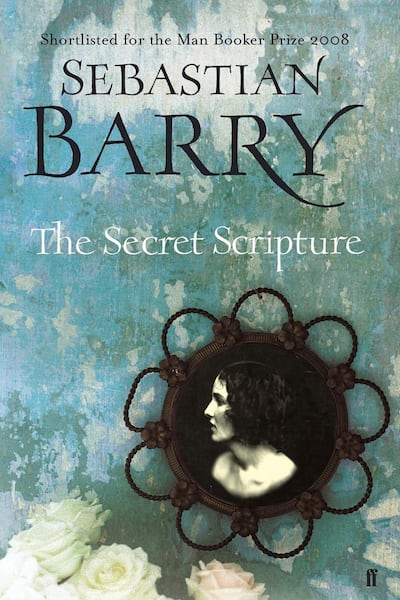
Sligo: The Secret Scripture by Sebastian Barry (2008)
Secret scripture, secret history, secret burials, whether of men or guns: the novel’s larger design has to do with the state of Ireland in the first half of the 20th century, its anxieties, deprivations and deadly alignments. The fact that Roseanne McNulty, born before the first World War, is ending her days in a lunatic asylum ties up with the perception of one character that the whole bloody country is a madhouse.
Barry's novel won the James Tait Black Memorial Prize, Costa Book of the Year, Irish Novel of the Year and was shortlisted for the Man Booker Prize for Fiction. A film version was directed by Jim Sheridan and stars Rooney Mara and Vanessa Redgrave. Review
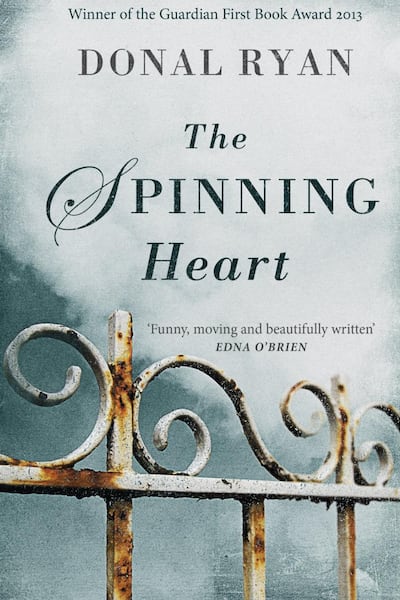
Tipperary: The Spinning Heart by Donal Ryan (2012)
Donal Ryan’s precise and evocative debut, which could as easily have taken the form of a script or a screenplay, not only tells the individual stories of a group of characters inhabiting the margins of smalltown and rural Ireland – the two are not quite the same – but also looks at a society in turmoil. Here is an Ireland of half-built housing estates and broken promises as well as disgruntled youth contemplating Australia rubbing shoulders with the despairingly middle aged.
The Spinning Heart is rooted in place – no bad thing. But it also draws its substance from tragedies and scandals. This is an exciting, relevant and believable contemporary novel about the lost and the wounded that listens to the present without discarding either the sins of the fathers or the literary legacy of the past. Review
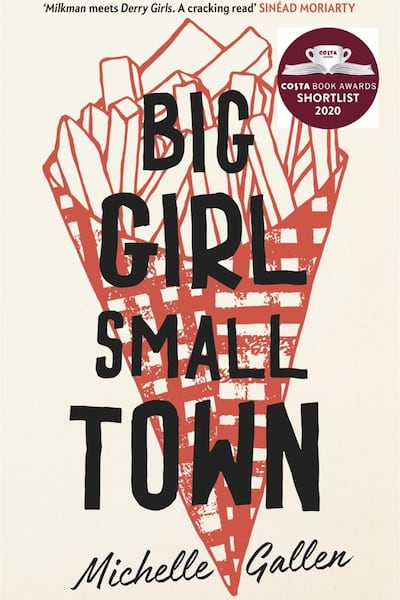
Tyrone: Big Girl, Small Town by Michelle Gallen (2020)
There’s a hint of Ignatius J Reilly in the protagonist of Big Girl, Small Town. Majella O’Neill is overweight, reclusive, misanthropic and disdainful of popular culture (except for Dallas). She lives with her mother in the family home in a small town on the Irish Border. There’s an absent father, no other siblings and a fraught relationship between Majella and her troubled mother.
Gallen was born in Tyrone in the 1970s and grew up a few miles from the Border. In her debut novel, there is a jaunty feel to her portrayal of small-town Ireland. But in Big Girl, Small Town, which is set in the 1990s not long after the Belfast Agreement, the legacy of the Troubles looms over a deeply divided community. Review

Waterford: The Amusements by Aingeala Flannery (2022)
In the resort town of Tramore, visitors arrive in waves with the tourist season, reliving the best days of their childhoods at the seaside amusements. Local teenager Helen Grant is indifferent to the charm of her surroundings; infatuated with her glamorous classmate Stella Swaine, she yearns to escape with her to art college, and from there, the world. But leaving Tramore is easier said than done. With an alcoholic father and an unsympathetic mother, Helen’s family life may shatter her dream, just when it seems to be within reach. Following the Grant and Swaine families and their neighbours over three decades, The Amusements is a portrait of life in a small town that comes with high praise from Donal Ryan, Anne Enright and Kathleen MacMahon. Out June from Sandycove.
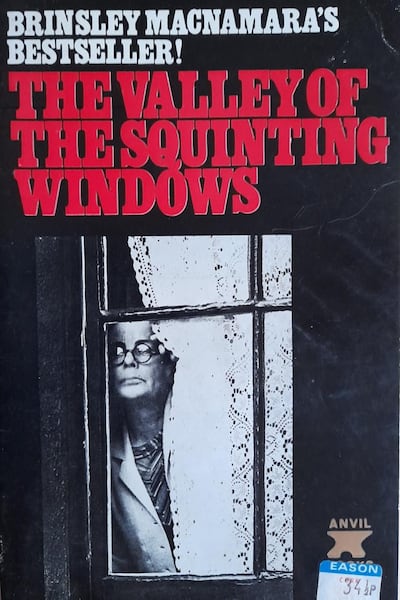
Westmeath: The Valley of the Squinting Windows by Brinsley MacNamara (1918)
MacNamara’s first novel’s pitiless portrayal of provincial Ireland, with its hypocrisy, back-biting, religiosity and violence, might well have been more warmly received if it had appeared prior to 1916, but the mood of the country in the wake of the Rising was not receptive to such an unflattering picture of Irish mores, whether authentic or not. Also, the close parallels between the fictional setting of Garradrimna and Devlin led to the public burning of the book in that town and the ostracisation of the author’s family.
Writing in 1968, Seán McMahon noted that although MacNamara's castigation of the malevolence and narrowness of the valley people was justifiable, the writer's decision to chronicle these vices in such loving detail called his "moral attitude" into question. He concluded: "The book lacks detachment and, in spite of an apparent sympathy, mercy." Review
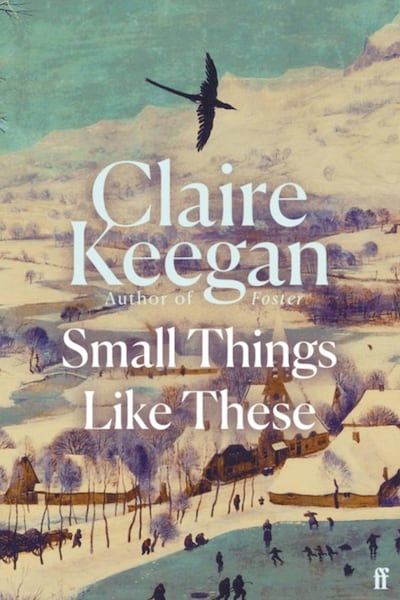
Wexford: Small Things Like These by Claire Keegan (2021)
The year is 1985, the country gripped by recession. Furlong, a coal and timber merchant in New Ross, Wexford, has a wife and five daughters to support. Like the rest of the town, he has plenty of worries, but over the course of this short, masterful novel it is his concern for the welfare of strangers that sets him apart.
Furlong is a hero in the classical sense, flawed and afraid, but ultimately noble. He goes quietly about his business, in a way that will be familiar to fans of Keegan. The author's unsentimental, unshowy style seems a perfect fit for a story that pits one man against the power of the Catholic Church. It's a tale we think we know well. Magdalene laundries, the incarceration of women, babies stolen, or worse, the rights of so many thousands denied over decades. Small Things Like These brings a fresh and sensitive perspective to an awful period in our collective history. A timely and powerful book that asks a deceptively simple question: "Why were the things that were closest so often the hardest to see?" Review
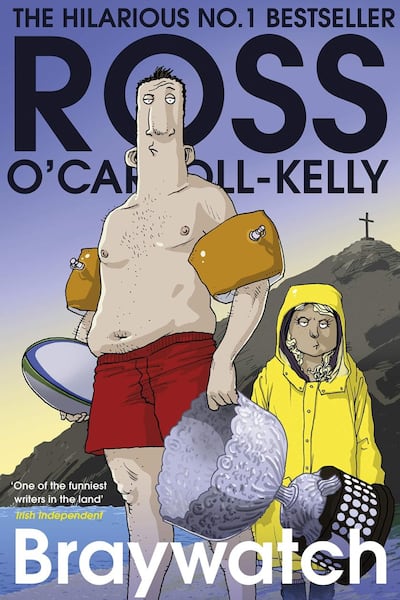
Wicklow: Braywatch by Ross O’Carroll-Kelly (2020)
Bray, the largest town in Co Wicklow, was long the butt of jokes in Paul Howard’s long-running, affectionate satire of south Dublin’s gilded and overprivileged arrested adolescents. So it was a bold move to actually relocate his flawed hero to the resort for the 20th book in the bestselling series.
South Dublin’s favourite son thought he could face any challenge – until he was asked to cross the bridge over the River Dargle. For Ross O’Carroll-Kelly – schools rugby hero, celebrated bon vivant and lover of beautiful women – life has suddenly become complicated.
His father has been accused of rigging a general election, his 70-year-old mother is about to bring six surrogate babies into the world, and his daughter is being hailed as “Ireland’s answer to Greta Thunberg”’, telling everyone who cares to listen that the end of the world is nigh.
As if that wasn’t bad enough, the Greatest Rugby Player Never to Play for Ireland has a nagging sense that he has to more to contribute to the beautiful game. Now he’s been offered a job coaching an underachieving school who’ve been waiting almost a century for their moment of glory. The challenge is to persuade a collection of jokers, chokers and forty-a-day smokers that they have what it takes to win the Leinster Schools Senior Cup. The only drawback ... the school is in Bray!




